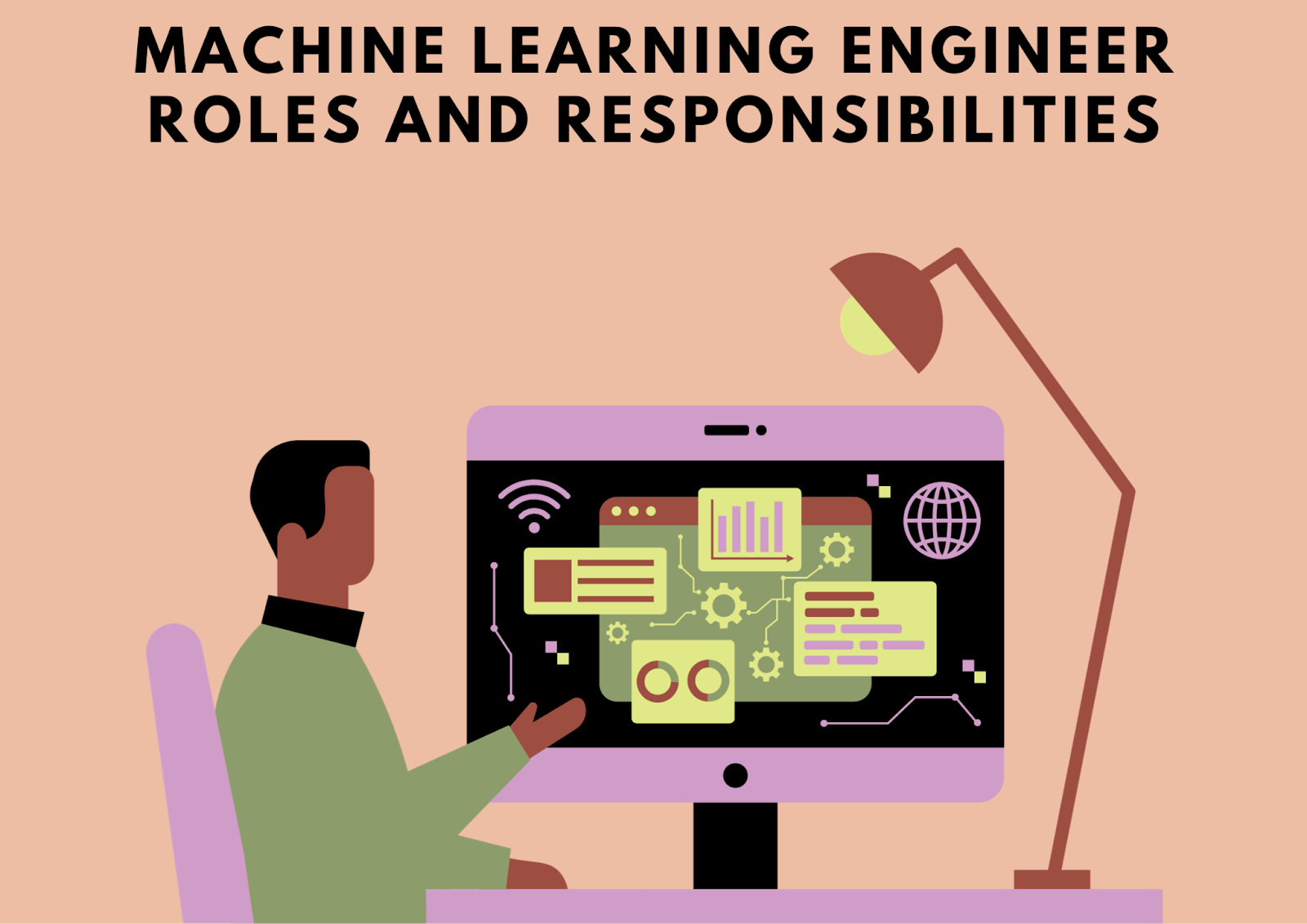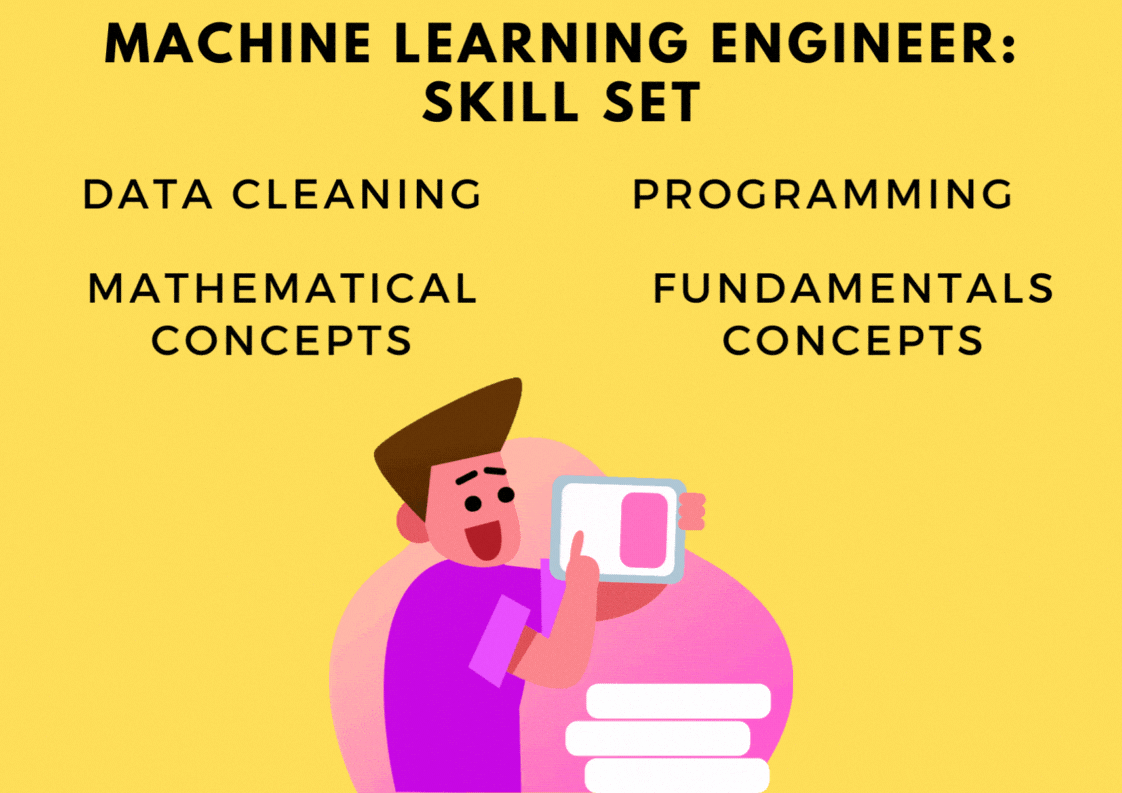How to Nail your next Technical Interview











You may be missing out on a 66.5% salary hike*













Machine learning has become an essential field to explore for several businesses in recent years, whether they are involved directly or indirectly. As machine learning has grown, the responsibilities surrounding it have changed. There are several Google searches for a machine learning roadmap. According to Forbes, the global machine learning industry was worth $1.58 billion in 2017 and is predicted to reach $20.83 billion by 2024, rising at a CAGR of 44.06% between 2017 and 2024.
The job description of ML Engineer is one of the most exciting roles being explored in the ML world at this moment. Machine learning engineers play an important role in the data science team. They have the primary responsibility of maintaining and enhancing current artificial intelligence technologies in addition to studying, developing, and creating the artificial intelligence that powers machine learning. What expertise must one have to become one? We are going to look into the elements to learn how to be a machine learning engineer efficiently.
Here is what we are going to learn!
When talking about ML, the first and probably most apparent profession that immediately springs to mind is the position of a Data Scientist. However, data scientists usually lack the engineering expertise required to implement a model. The development of a production application centered around the model demands a high level of engineering proficiency in areas like data engineering, software engineering methods, CI-CD, MLOps, deployment, logging, and monitoring. This is where machine learning engineers may come in.
Alt text: Machine learning requirements
Thus, software engineers who work on the backend of app development are the most suitable candidates for the position of ML engineer. Creating machine learning applications is not like creating ordinary programs; it takes knowledge and experience beyond what a regular software developer would have.
From being primarily academic research areas, artificial intelligence and machine learning have been adopted in business applications by both established companies and startups.
The development, implementation, and maintenance of server-side web applications fall within the responsibilities of a backend engineer. To put it briefly, a back-end engineer's main responsibility is building a software program's framework. They are in charge of creating the framework that a software program has. They invest work in developing APIs and server scripts that front-end engineers and UX designers will use. Here are certain responsibilities that they need to perform on a day-to-day basis.

A machine learning engineer serves the role of a tech professional who develops, looks after, and improves AI systems on the models they run. Machine learning engineers enable businesses to fully benefit from AI/ML technologies while following conventional programming standards and conventions by integrating the laws and regulations of data science with those of programming. Additionally, an ML engineer's duties will mostly rely on the project, business, and industry. Here are certain common responsibilities of ML engineers.

The skills are the most important component of the machine learning engineer roadmap. The fundamental skills needed are as follows:

Programming: Coding is necessary for handling large amounts of data, optimizing a model, testing it, and other tasks when building machine learning models. Any individual with a foundational understanding of programming can start working in machine learning effortlessly because many programming languages come with built-in machine learning libraries.
Maths: With the availability of tools and frameworks, a position in machine learning does not necessitate a high level of mathematical proficiency. Nevertheless, you have to prioritize a few essential topics, such as linear algebra, calculus, probability, and statistics, when studying mathematics for machine learning.
Fundamental Ideas in Machine Learning: A key component of machine learning success is the understanding of its fundamental concepts, including supervised, unsupervised, and reinforcement learning. Understanding the fundamentals of machine learning may help in your comprehension of the purpose and objective of the technology.
Data Cleaning: Machine learning involves developing and delivering data to algorithms that manage the computational aspects of challenging computations. Cleaning data sets is one of the main activities involved in employing machine learning data. The four primary phases of data cleaning—removing unnecessary data, fixing structural flaws, managing unwanted outliers, and addressing missing data—are necessary skills for someone interested in pursuing a job in machine learning.
Deep Learning: Deep learning is commonly used in the field of computer vision when it is applied to the analysis and classification of pictures and videos. It's necessary that one should know the fundamentals of deep learning and be comfortable with deep learning tools and frameworks like TensorFlow, Keras, and PyTorch. Deep learning additionally serves to evaluate and understand human language in natural language processing. Deep learning also has applications in speech recognition to identify speech patterns and transcribe spoken words.
MLOps: ML models can be challenging to handle and run consistently since they always involve some kind of data modification, which usually occurs using scripts or even notebook cells. MLOps is a collection of procedures that integrates data engineering, DevOps, and machine learning. Its goal is the effective and reliable deployment and upkeep of machine learning systems in operation.
Additionally, do not forget to use the set of skills you acquired while working as a backend engineer. The skills such as database management, familiarity with Linux/Unix operating systems, API development skills and use of different data structures and algorithms.
The field of ML engineering is intriguing. It combines the realms of software engineering and ML modeling, making it exceptional in the Software Engineering scenario. Numerous incredible discoveries driven by machine learning are likely to happen soon, and machine learning engineers will remain an essential part of all such ML activities. So, if you are looking for a transition from being a back-end engineer to an ML engineer, now is the time. The machine learning engineer roadmap might be overwhelming, but Interview Kickstart is there to help you. Our exceptional machine learning program is designed to get you ready for such situations. Sign up today!
Machine learning engineers often need to use Python as the fundamental language for data analytics and other ML operations. Having an understanding of certain higher-level languages like JavaScript, which might work slowly but is simpler to use, and lower-level languages like C++, Java, and R, which work faster but are a little difficult to learn.
An ML engineer earns an average salary of $123,143 per year. Whereas a software engineer earns an average salary of around $92,378 per year. So, it can be clearly stated that ML engineers make more than software engineers.
As the use of AI and machine learning fuels ongoing industry shifts, the Future of Jobs Report 2023 projects a 40% growth in demand, or 1 million new jobs, for professionals in these fields. As a result, ML engineering is and will continue to be one of the fastest-growing AI professions.
They make use of code that facilitates browser-DB communication as well as data storage, comprehension, and deletion. A back-end engineer must be well-versed in programming languages such as Python, PHP, SQL, RoR, Java,.NET, Haskell, and Clojure.
The 3 parts of backend development are:


